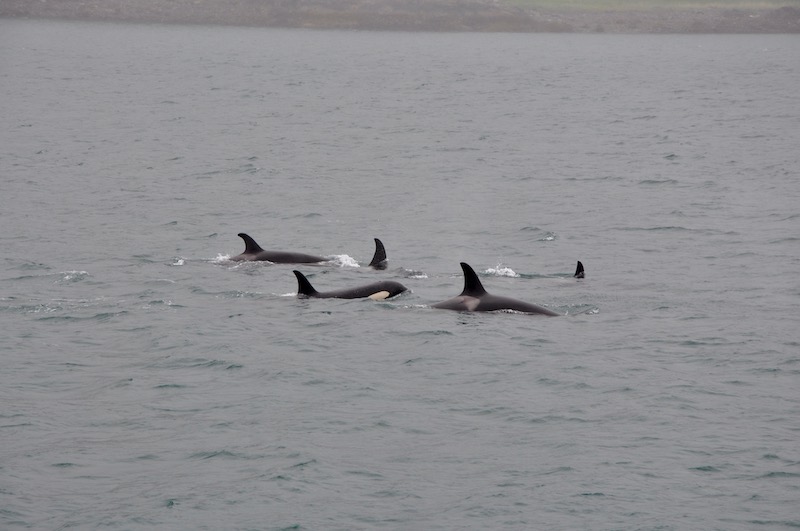Antarctic tourism is sometimes criticized for taking well-heeled travelers to the frozen continent, a place that has a fragile ecosystem to say the least. But, it turns out that the ships that operate in the Southern Ocean can also play an active part in collecting important research data too. No more is this evident than in a recent story of one such vessel which helped solved an ongoing mystery surrounding killer whales.
According to the International Association of Antarctic Tour Operators (IAATO), a ship operated by the organization was recently used as part of a research mission off of Cape Horn at the the southernmost tip of South America. Aboard the 24-meter (78 foot) IAATO research vessel S/Y Australis was none other than Dr Bob Pitman, a researcher from NOAA Fisheries’ Southwest Fisheries Science Center in California, who was lured to the region on a search for a new species of killer whale. Photos taken by travelers aboard another IAATO member vessel dating back to the 1990s showed the possibility of such a species existing, but confirmation of the creature didn’t yet exit. On a voyage back in January however, Pittman was finally able to spot the animals in the wild, expanding the orca family tree in the process.
The so-called “Type D” killer whale resembles others of the species closely. But the newest member of the family has a distinctly rounded head, a more pointy dorsal fin, and smaller eye patches. This helps to distinguish them from the brethren, which also inhabit the icy waters of the Southern Ocean in large numbers. As its name implies, this is the fourth such species to be found in the planet’s oceans, although the Type D doesn’t seem to stray too far from the Southern Ocean.
Dr. Pittman has spent more than 14 years searching for this new type of whale. That’s because the other three known species are seen routinely in the Antarctic, while the Type D is apparently incredibly rare. Pittman says “The type D killer whale lives in the most inhospitable waters on the planet. It’s a good place to hide.” This has led him to give this species a “sub-antarctic” label when registering its existence.
The fact that an IAATO vessel played a part in finding the Type D is fairly remarkable. The coming and going of tourist vessels to the Southern Ocean has given Pittman more opportunities to search for the elusive creature, particularly when he doesn’t have a research ship of his own. Studying any ocean wildlife is always a challenge, as just finding them can be incredibly difficult, let alone observing their behaviors and patterns in the wild.
Amanda Lynnes, Head of Communications and Environment for IAATO, said, “This is really exciting news. IAATO members have been supporting whale research for decades in Antarctica, a region where data on these large mammals are still surprisingly scarce and much needed to ensure their continued protection. She went on to add, “Visitors can often get involved too; in this case their holiday snapshots really contribute to scientists’ understanding of whales. The IAATO community eagerly awaits further news from the NOAA scientists about the Type D killer whale.”
This is a great story of how tourism can actually help expand the knowledge of researchers and scientists.
- Gear Review: The Xero Scrambler Mid is an Ultralight Hiking Shoe for Spring - March 1, 2023
- Gear Review: Yeti Roadie 48 Wheeled Cooler - August 18, 2022
- Kristin Harila Continues Pursuit of 8000-Meter Speed Record - August 16, 2022

Really interesting post Kraig, this is my first post on my new blog, and who would have thought it would be about killer whales! My post where I mentioned your great site is at :-
https://stephenallerton.com/type-d-killer-whale/
thanks again for your interesting post.